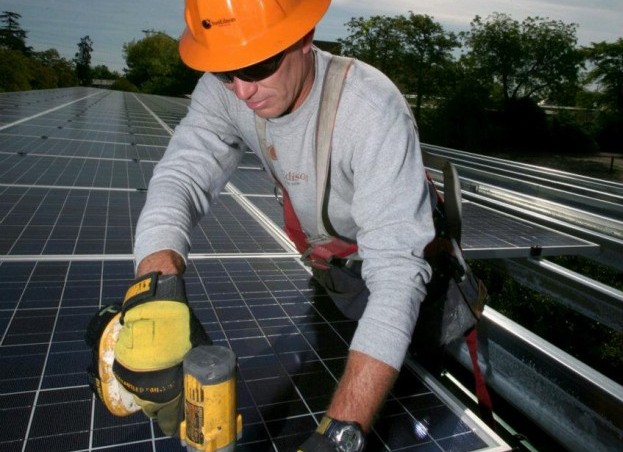
The rate at which domestic solar systems were installed witnessed something of an uptick throughout June, but still struggled to approach the feed-in tariff deployment cap for T2.
Late last week Ofgem confirmed its final figures for the FiT period running 1 April to 30 June, confirming that a total of 26.679MW of sub-10kW solar was installed over that period.
This was just more than half of the original deployment cap for the period of 49.6MW and far short of the total T2 deployment cap – including unutilised T1 capacity carried over – of 76.96MW.
This has resulted in 50.29MW being carried over into the new reporting period for 1 July to 30 September, meaning that the T3 deployment cap for sub-10kW installs now stands at 100.89MW.
Installation statistics for the small-commercial range (10-50kW) have also reported a second successive underperformance, with 15.37MW of capacity having been carried over into the T3 period.
In a response to a written question by Labour MP Helen Hayes last month, energy minister Andrea Leadsom said the government expected deployment to continue to rise as costs fell and the industry “acclimatizes to the new system”.
In May Leadsom responded to a similar question, stating: “Once transitional and seasonal factors are considered, I am confident that we remain on track to meet the deployment projections published in the Impact Assessment of the 2015 FiTs review decision.”
Further examination of the deployment figures shows that there has indeed been an increase in average deployment figures into the summer.
Total deployment in T2 equated to an average of 293kW of solar PV under the domestic band being installed each day. Stripping out June’s deployment, this figure was 349kW per day, an increase of circa 19%.
A rudimentary extrapolation of that daily install figure would produce total domestic solar deployment throughout T3 of just over 32MW. Such deployment would be up on the previous two periods, but still behind both the original deployment cap of 50.6MW and new cap – including unutilised capacity from T2 – of 100.89MW.
Nick Wood, policy analyst at the Solar Trade Association, said the trade body was “encouraged” to see a “slight upturn” in domestic installs but warned that total Q2 deployment remained almost three-quarters down on last year’s Q2 domestic rate.
“Deployment in the domestic and small commercial bands is also far below the new cap, which has now extended to over 100MW. On the other hand the caps are severely constraining ambition in the commercial rooftop and standalone sectors. Our policy team and working groups have been putting together suggestions to stimulate the domestic market and allow the commercial rooftop market the growth it can deliver,” he said.

